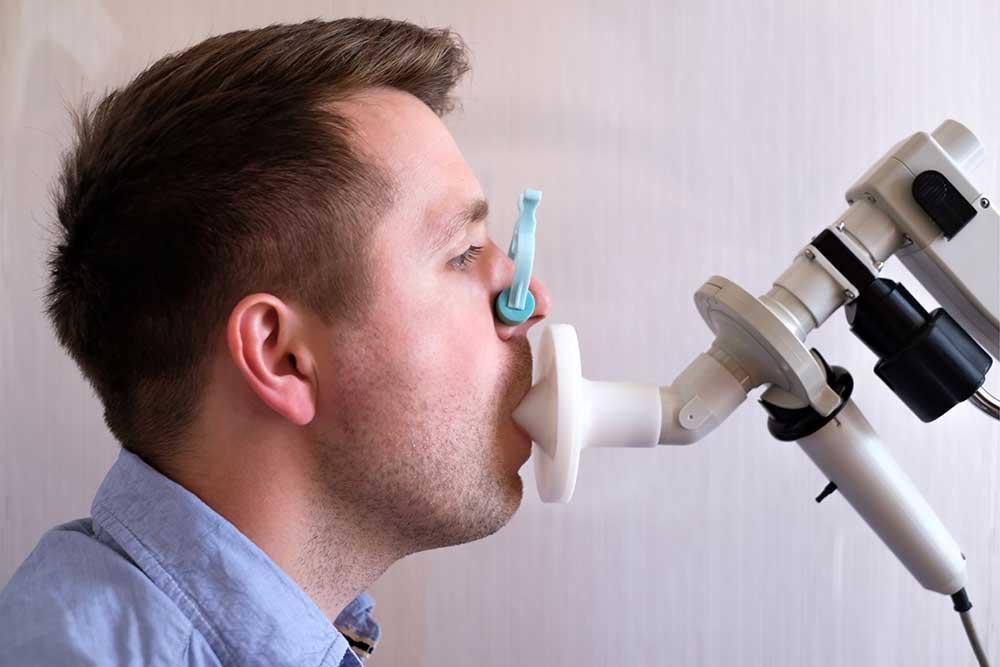7 Tips for Living With Asthma in Houston

Houston is a wonderful place to work and live, but it can wreak havoc on your respiratory tract. This is especially true for individuals with asthma, who are especially sensitive to environmental pollutants and changes in weather patterns.
During the winter months, when Houston experiences notable fluctuations in temperature, humidity and moisture levels, asthma patients can have a difficult time. According to Harvard University, the fall and winter months are the most difficult for asthmatics. This is largely due to the fact that:
- Cold temperatures cause the airways to contract.
- Air pressure fluctuations trigger sinus episodes.
- Rain and wind stir up mold spores and other allergens.
- Lightning storms create an abundance of ozone.
Each of these scenarios cause increased asthma symptoms, which can lead to more dramatic asthma attacks.
7 Tips for Handling Asthma in Houston
The following tips can help asthma patients, as well as their families, weather Houston’s winter months while continuing to breath easy.
- Know What to Do In An Asthma Emergency. If you have asthma, or have a child with asthma, you’re probably familiar with what to do in an emergency. However, it’s important that other family members, teachers, caregivers, coaches and friends know what to do as well. Symptoms of an asthma emergency include:
–Being out of breath, even when at rest.
–Severe anxiety
–Not showing signs of improvement after using an inhaler.
–Bluish lips and/or fingernail beds
–Unconsciousness
If someone with asthma is exhibiting any of these signs or symptoms, call 911 immediately or get the individual to an ER as soon as possible. It’s always better to be safe than sorry. - Create an Asthma Action Plan. An asthma action plan contains written information regarding your name, contact information, asthma triggers, current medications, and other information that is helpful to provide to others if you have a severe asthma attack or emergency. A copy should be kept in wallets or purses, backpacks, the school office, with daycare providers and so on. Visit the CDC’s, “Asthma Action Plan” web pages for more information or to use their templates to create your own asthma Action Plan.
- Use a high-quality air filtration system. Most people worry about outside air, and it’s true that ground-level ozone and pollutants are a threat. However, interior air is often more toxic than the air you breathe outdoors. According to Green Guard, “The air in our homes, schools and offices can be 2 to 5 times more polluted, and in some cases 100 times more polluted, than outdoor air.” Installing a high-quality air filtration system, and changing the filters as per the manufacturer’s instructions, can cause a notable reduction in asthma triggers and respiratory problems. The best systems are whole-house systems, built into a home’s heating, ventilation and air conditioning system.
- Keep “rescue” inhalers everywhere. Whether eight- or 80-years old, every asthmatic should keep a “rescue” albuterol inhaler in multiple locations, based on their daily routines. For children, this might look like one in the bedroom, one in a living room end table drawer and one in the backpack. Families with asthmatics should keep an inhaler in the car glove compartment and, depending on school policies, it’s a good idea for teachers and care providers to have one on hand as well. These inhalers provide quick relief and can mitigate symptoms until the individual can get more scenario-specific treatment.
- Take control of asthma triggers. Identifying asthma triggers is the best means of avoiding them so you can prevent an asthma attack. Common triggers include things like dust, pollen and dander, so vacuuming regularly and installing hardwood flooring and/or low-profile carpets will help. Asthma experts recommend keeping indoor pets out of bedrooms. Scheduling outdoor activities around air quality reports can also help.
- Consider making a move. Did you know rural areas of Houston have considerably higher rates of asthma than metropolitan areas? The Houston Chronicle reports that rural areas of Houston also have elevated asthma-related hospitalization rates. The leading causes are the prevalence of allergens generated in heavily-wooded rural areas, as well as lack of access to medical facilities equipped to handle asthma diagnoses and treatments. If you or a family member suffer from severe asthma, moving to a more urban area may reduce asthma symptoms. Otherwise, visit your healthcare provider regularly to keep asthma and respiratory triggers under control.
- Eat well. Obesity appears to lessen the effectiveness of asthma medications and increases the risk of asthma-related hospitalization. Eat a well-balanced diet and get regular, moderate exercise (use your inhaler first!) to maintain an healthy weight.
While medical researchers are still working on a cure for asthma, implementing the above 7 tips will minimize and/or reduce the severity of asthma attacks, allowing you live, work and play more comfortably in Houston and her surrounding areas.








